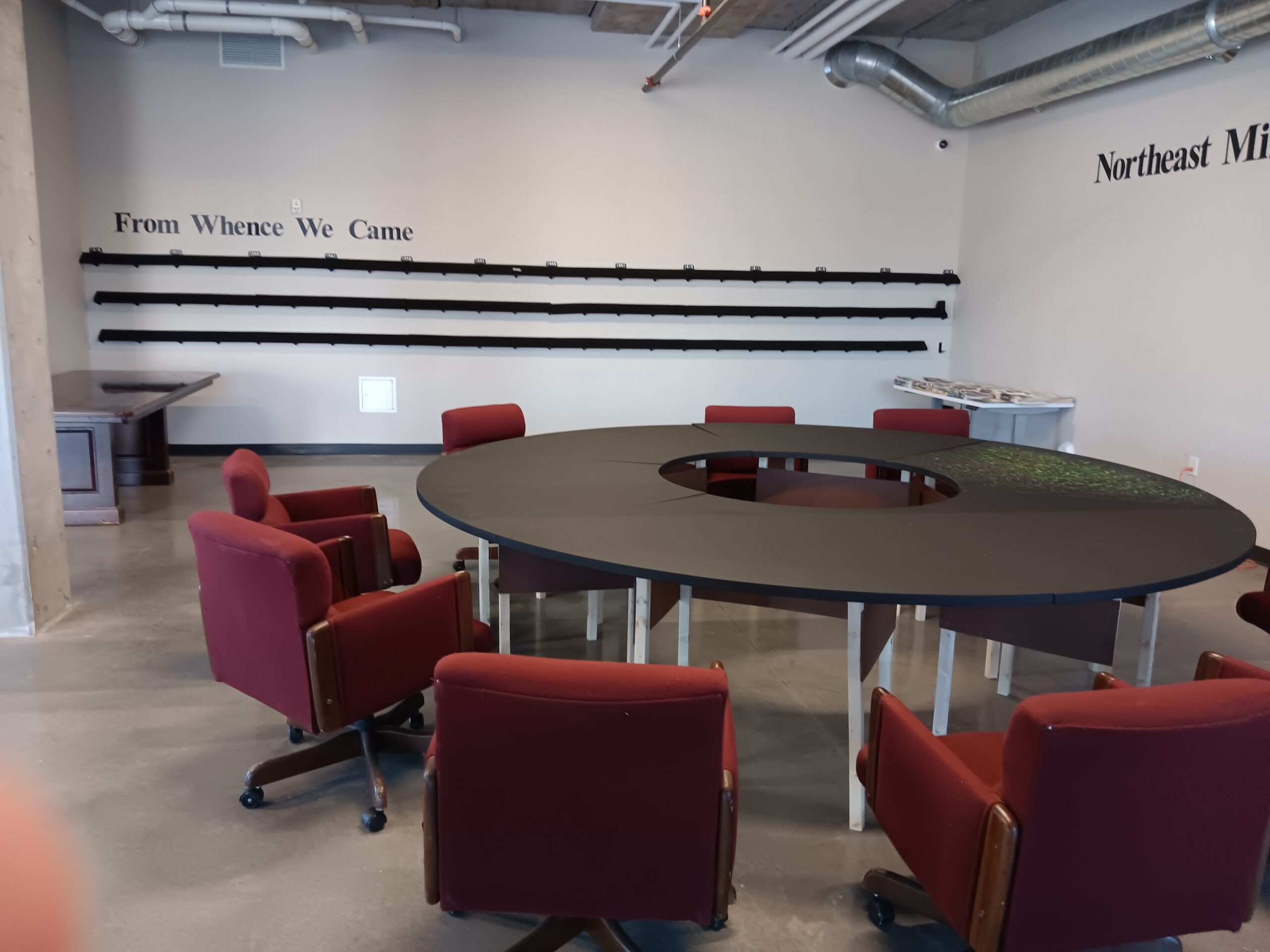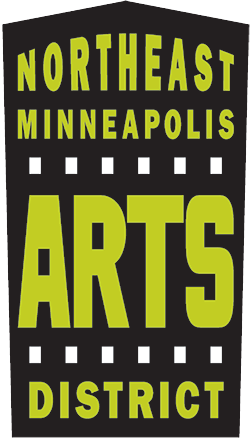The Northeast Minneapolis Arts District is embarking on a bold new project to delve into the history of the visual arts in Minneapolis. But far from an exercise in nostalgia, the goal of this endeavor is to glean insights from the past that empower current and future generations to advocate for a thriving and resilient ecosystem for the arts in our city.
The key components of the project are:
- Roundtable discussions that convene past and present leaders of the arts in Minneapolis for critical dialogue;
- A published timeline of the visual arts in Minneapolis, distilled from the documentation of the roundtable discussions, alongside other research; and
- A public welcome center equipped with informational maps and an interactive display of the above historical timeline.

The project will start its documentation in the 1970s, when the Minneapolis Arts Commission was originated, and a gallery scene gained prominence in the Warehouse District of downtown. Many who were part of this early formative period for the arts in Minneapolis, including the first Arts Commissioner Melisande Charles, have passed away. But many still remember in vivid detail how beloved mainstays of the arts scene in Minneapolis got their start; Loren Niemi helped implement Charles’ vision of a vibrant Arts community as staff for FARM (Foundation for Arts Resources Management), which managed both CETA and other projects, including Hennepin Center for the Arts and the Southern Theater. WARM, Forecast, and Artspace, also got their start through these early programs and the efforts of Charles and Niemi.
There is a keen interest among members of the Arts District board that this history—much of which exists only as an oral history—be preserved and passed down. But the Arts District board fully understands that it has only a sliver of the story and that any genuine attempt to capture the wider history of the visual arts in Minneapolis will need to bring many more people to the table.
That is, quite literally, the plan.
In September of 2023, the Arts District secured access to a space in the Timber & Tie building, which created the opportunity at the heart of this project: a physical gathering place, with a round table in the center. The table, designed by Remo Campopiano and built and painted collaboratively with Jim Gregory and Aribert Munzner respectively, is not only the perfect symbol for the project’s goals but also the physical vehicle to achieve them.
“Art movements don’t happen in a vacuum,” said Campopiano, who is serving as the project manager. “They need a literary voice to make them visible, so that those who are part of them have a shared sense of identity.” Campopiano’s own art career was profoundly affected by the rise of the gallery district in the 1980s, when he and Lynn Ball founded the publication ARTPAPER. Then as now, Campopiano recognized the need for critical dialogue among artists. He and Ball convened people around a similar round table and published the discussion in ARTPAPER. Deborah Ultan, the arts archivist at the Andersen Library, University of Minnesota, has secured the funds needed to digitize all eleven years of ARTPAPER, 1982 though 1993. Once completed, visitors to the welcome center will have the opportunity to listen to selected excerpts on the timeline.

Those ARTPAPER conversations centered on the same existential questions this new project is asking: “Who are we? Where did we come from? Where are we going?” In this way, the table is much more than a throwback; it is an effort to galvanize the kind of dialogue necessary to build momentum for the arts today and into the future.
The first roundtable discussion will take place sometime this spring, centered around the rise and fall of the downtown gallery district in the 1980s. Subsequent discussions will similarly be designed to foster storytelling, dialogue, and vision-sharing among the diverse communities that encompass the past, present, and future of the visual arts in Minneapolis.

Another aspect of the program will be to open the space as a public welcome center for the Arts District, with regular open hours and informational materials. One wall of the space will feature a large map identifying the major buildings and public art landmarks in the geographical Arts District; spanning another wall will be an interactive timeline installation bringing visitors in the history of the Arts District and the visual arts in Minneapolis, as documented through the project.
A project of this scope will ultimately require significant funding. The Arts District board will launch a donor-appeals campaign this spring to invite people to be part of realizing this vision. If this deeper vision is realized, this project could not only help clarify and enhance the experience of visitors to the Arts District, but galvanize a shared sense of identity, heritage, and energy for the future of the arts in Minneapolis.

